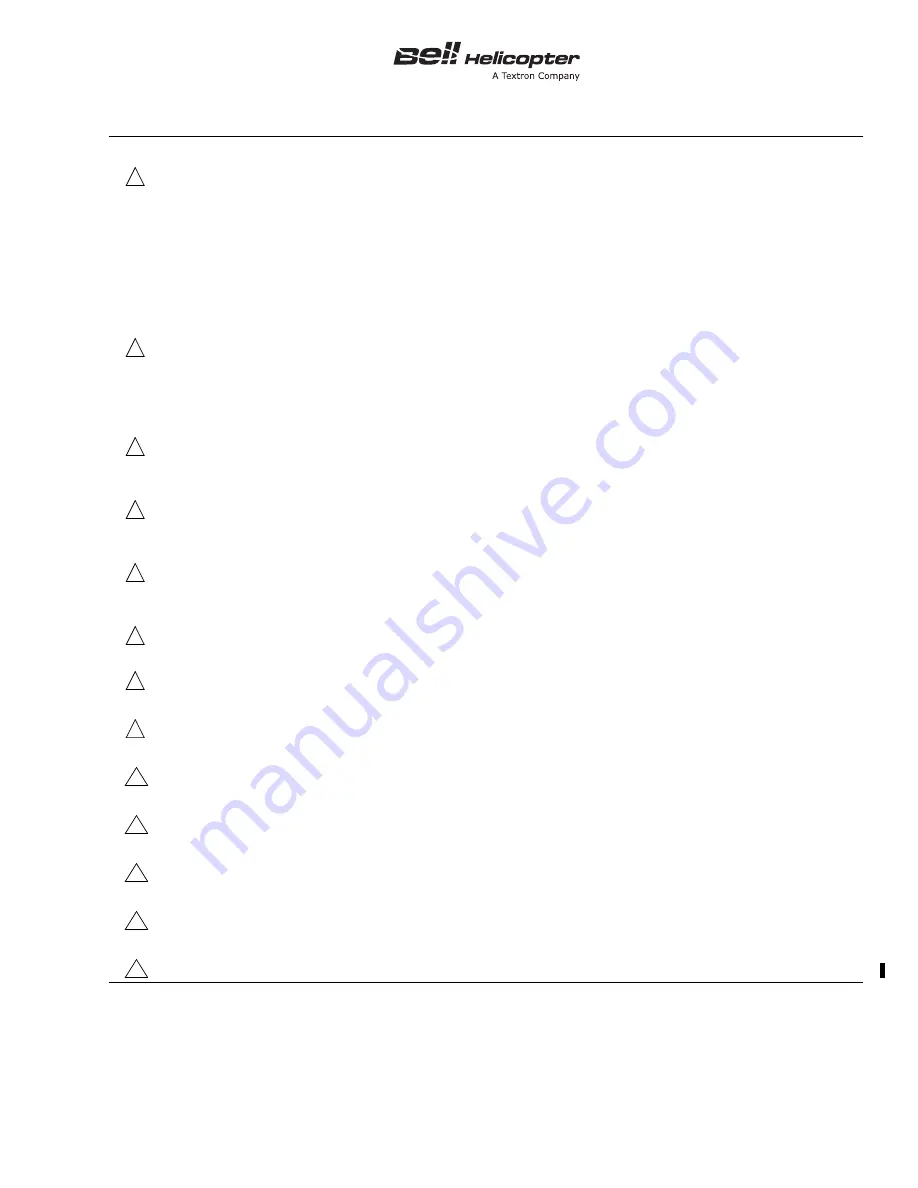
TC APPROVED
BHT-407-MM-1
4-00-00
2 MAY 2019
Rev. 47
Page 11
Export Classification C, ECCN EAR99
Table 4-1. Airworthiness Limitations Schedule (Cont)
NOTES (CONT):
RIN: Retirement Index Number. Components sensitive to operational events, such as torque events or
run-on landings, are assigned a maximum RIN number. This number is based on the fatigue damage
that results from normal helicopter lifts and takeoffs (torque events) or from run-on landings, whichever
applies.
New components will begin with an accumulated RIN of zero, which will increase as the helicopter is
subjected to torque events or run-on landings. The operator must record the number of torque events or
run-on landings, and increase the accumulated RIN as directed. When a component reaches the
maximum RIN or retirement flight hours, whichever occurs first, the component must be retired from
service.
For every one torque event, you add one RIN to the previous total. A torque event occurs for
every takeoff (one takeoff plus the subsequent landing equals one RIN) and every load lift.
A load lift (internal or external) may be defined as a sling load, a rescue hoist load or any load that is
added to the helicopter while airborne. For example: if an operator performs one takeoff, picks up
and drops 10 sling loads, and then lands, he must record 11 torque events.
For every one run-on landing, you add one RIN to the previous total. A run-on landing is defined as one
where there is forward ground travel of the helicopter greater than 3 feet with the weight on the skids.
Refer to ASB 407-03-59.
This crosstube is modified from crosstube assembly 407-050-202-101 per ASB 407-02-50. Depending
on status of part determined per Table 1 of ASB 407-02-50, crosstube may be subject to retirement
upon reaching 2500 landings.
When the helicopter is used for pilot training operations that include repeated autorotation landings,
record 0.4 flight hour for each practice autorotation landing (including hover throttle chops). Autorotation
approaches with power recovery to hover do not have to be counted as autorotation landings.
Input driveshaft 206-340-300-103 must be removed from service no later than 30 September 1998.
Refer to ASB 407-98-19 and Transport Canada AD CF-98-25 Bell.
Input driveshaft 206-340-300-107 must be overhauled every 1250 hours of operation. The overhaul is to
be done by Kamatics Corp. only.
Input driveshaft 206-340-300-105 must be removed from service upon reaching 1250 hours in
service. Refer to ASB 407-01-45 for details.
Tailboom assembly is also subjected to an airworthiness inspection. Refer to
Table 4-2
and
ASB 407-07-80 for details.
Reservoir per DOT-3HT and DOT exemption letter DOT-E-8162. This reservoir is part of reservoir
407-073-848-101.
Aeronautical Accessories Incorporated (AAI) crosstube assemblies listed are BHT-approved production
and spare alternates.
Input driveshaft 407-340-310-101 must be overhauled every 2500 hours of operation. The overhaul is to
be done by Kamatics Corp. only.
Tailboom assembly subjected to an airworthiness inspection. Refer to
Table 4-2
for details.
2
3
4
5
6
7
8
9
10
11
12
13
14
















































